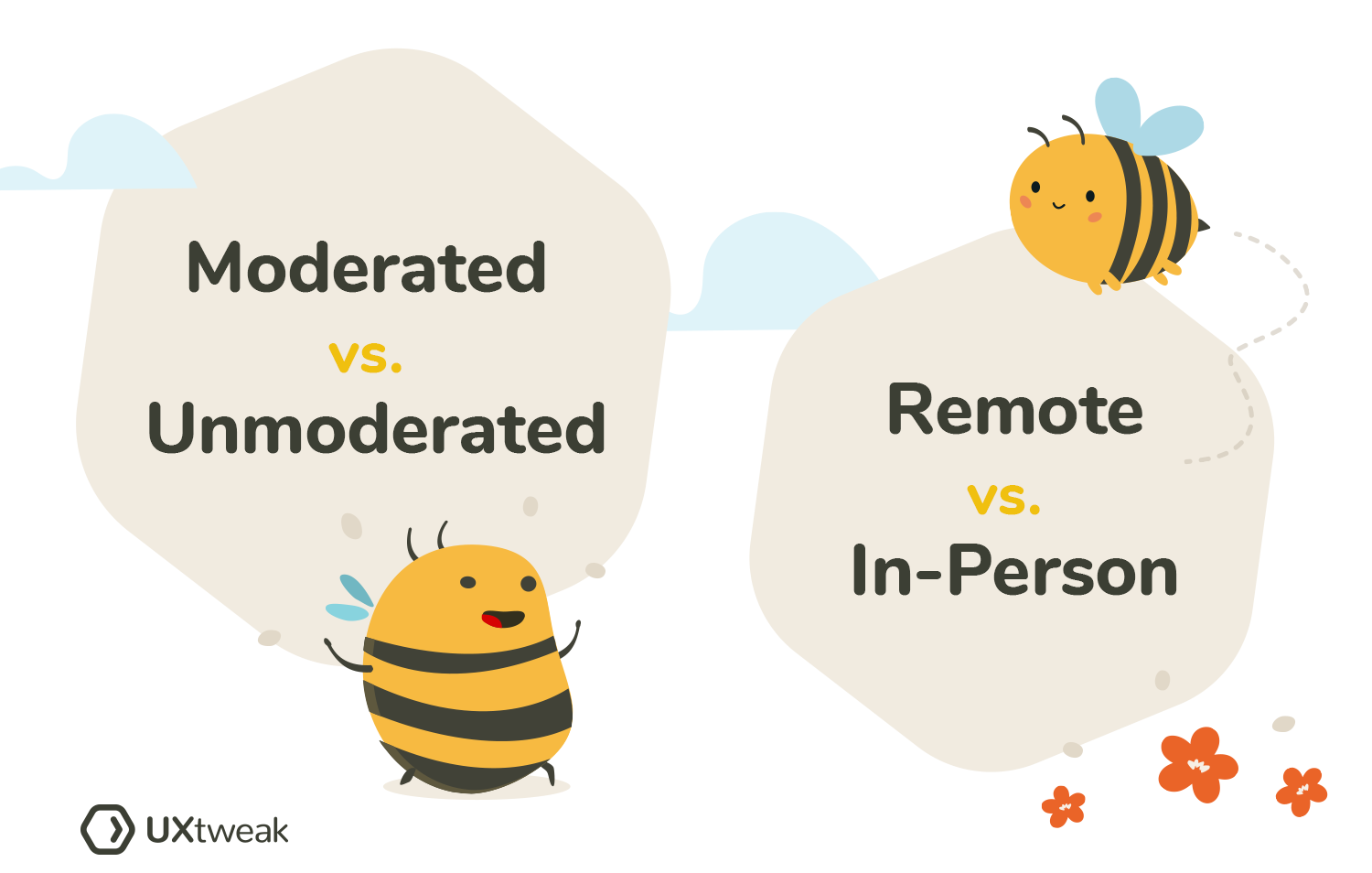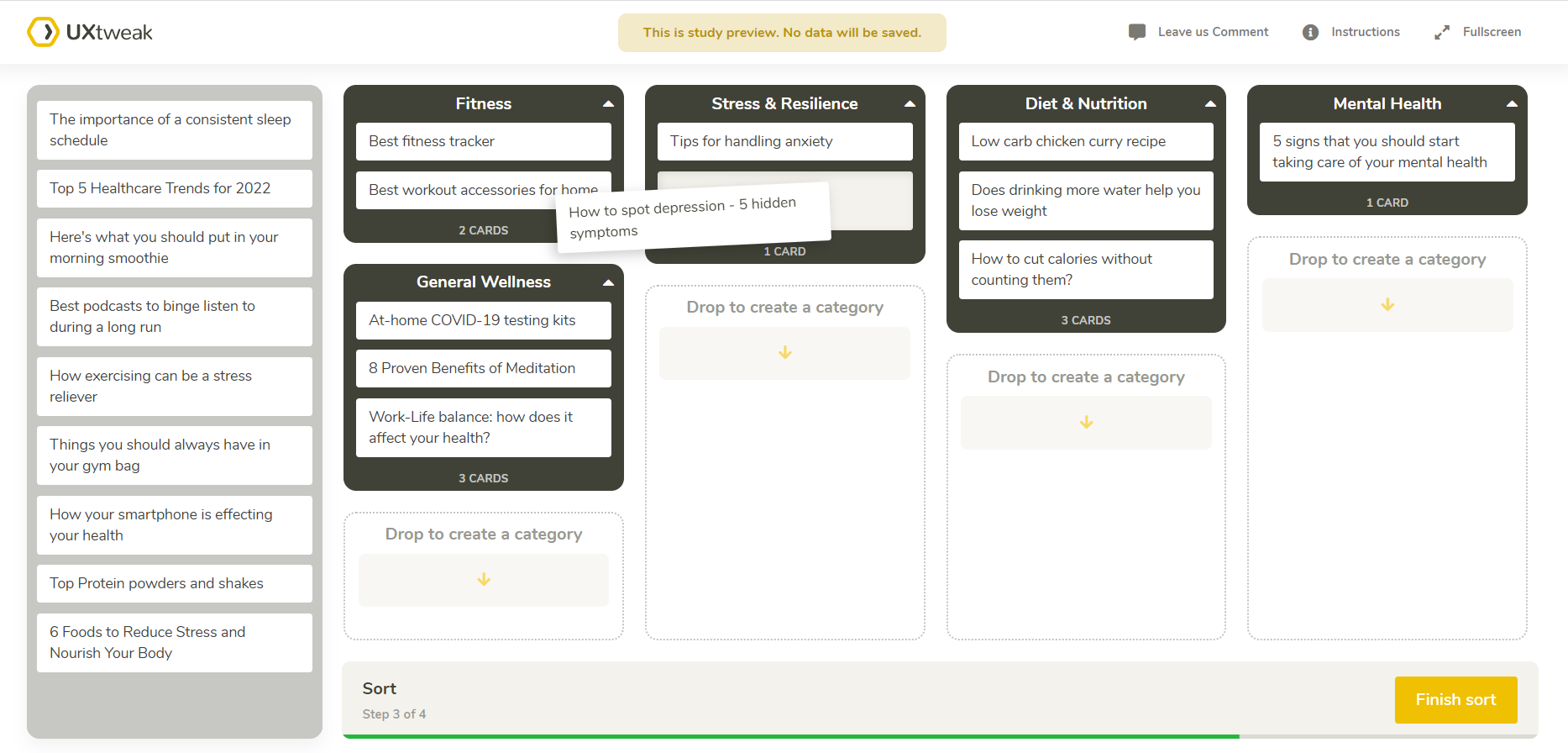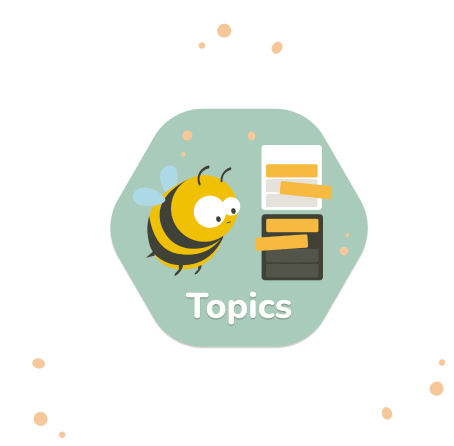There are two dimensions in UX research which are the basis for 4 main UX research types that are applicable to most any kind of research method. Deciding which one you’re going to choose for your study is a crucial aspect as it will directly affect your budget and the results of your content test.
Here are the 4 main types of approaches in UX research:
- Moderated vs. Unmoderated
- Remote vs. In-Person
As a researcher, you can mix and match your approach in the way that suits your project and conduct a content test that is unmoderated and remote, moderated and remote, etc.. The optimal choice always depends on the method you choose as well as the information you’re trying to gather.

Moderated vs. Unmoderated
Moderated testing requires a presence of a qualified researcher who will be able to guide the study and interact with the participant. Unmoderated tests, on the other hand, can be completed by participants completely on their own, simply by following a static set of instructions.
Unmoderated tests are usually conducted remotely with the help of a specialized online research tool such as UXtweak.
The benefits of unmoderated content testing are manifold: the study is usually less expensive than a moderated one and it can be conducted anywhere, at any time. You can also test with as many respondents as you want – all you have to do is send them a study link. This makes unmoderated research the go-to solution when looking for quantitative evaluation.
A moderated study is a pricier option. However, it is typically worthwhile because it allows you to observe the participant’s body language, ask further questions, and get a sense of their genuine first-time experience with your product.
Read our full Moderated vs. Unmoderated research comparison to choose the right approach for your content testing study.
Remote vs. In-person
Remote content testing can be easily conducted online, with the help of a content testing tool, and without the need for the researcher and the participant to be physically present in the same room.
In-person content testing is the opposite. You can still use specialized tools to help you, but you’ll need to be in the same room with your respondent. The benefit is that you’ll get to genuinely watch respondents complete the study right in front of you.
💡Tip: Check out these content testing tips and tricks
7 best content testing methods
- Usability Testing
- Five-second testing
- A/B testing
- Preference test
- Highlighter method
- Card sorting
- Cloze test
Usability Testing
Classical usability testing is one of the most effective and easy-to-implement content testing methods out there. It’s a great way to gather qualitative data from your users, see how they interact with your product’s content and notice confusion on the spot.
For content testing, we recommend moderated usability studies, that you can either conduct remotely or in person. That’s because moderated testing gives you an opportunity to directly interact with the participant during the study, ask them questions, and see how they navigate your content in real-time. You’ll see what they pay attention to, what confuses them and will be able to ask follow-up questions to get more details about their answers.
Base your content usability tests on open-ended tasks and questions and give users an opportunity to explore the product for as long as they need. Your goal here is to gather as many qualitative insights and honest opinions as possible.
You can come up with different types of tasks that will encourage the participants to share their opinions and elaborate on them further. For example, if you’re testing the content on the product’s feature page, you can ask testers to read about the feature and then describe it to you in their own words. This will help to measure the comprehension and readability of your content.
Don’t forget to document your studies and record each testing session. This way you’ll always be able to come back to them and get more context on the user’s opinions.
Five second testing
Five Second Testing is an easy way to test the overall impression that your content leaves on your users, to find out what information they remember from the first glance and whether your product conveys the intended message.
The process is simple: you show your participants a design for 5 seconds, then ask them a few questions to test their understanding. In the context of content testing, you can show them a design of a specific page or screen that you want to test. For example, it could be a screenshot of the homepage or a product category page.
If the content design is good, users should be able to easily get its key message.
To gauge the first impressions, you can ask general questions like:
- What do you think this website is about?
- What do you think this company sells?
- What grabbed your attention?
Or you can go for some more specific questions like:
- What sentences did you remember?
- What was the company’s name?
- Were there any items on sale?
Check out our five second test and usability testing demos to get a better understanding of the methods:
A/B testing
A great quantitative research method that involves giving two groups of users 2 variations of content in order to determine which one performs better. Although A/B testing won’t give you direct evidence of why users achieved better results with one option over the other, it’s a great and reliable solution when you need to choose between 2 content options.
You can, for example, test different wordings for your call-to-action (CTA) button and see which one has a greater click-through rate.
Preference test
A preference test is similar to an A/B test, as they both aim to pick one best performing option out of two. But while an A/B test involves splitting the research group into two and showing each group only one version, in a preference test each user sees and compares two options.
This is a great option when you want to pit your content against your competitor’s content. Imagine you have a very similar product or service. Insurance services are a good example here, as they basically offer the same service with minimal variations. You can compare two texts, such as service descriptions or instructions, and have a user decide which they prefer. If they pick your competitor’s content, you know you must make some changes to your text. I they pick yours, you’re on a good track.
Highlighter method
This method will help you find out if the copywriting content you created conveys the right tone of voice to the customer.
Determine your priorities in whether you want to sound friendly, professional, trustworthy, etc. Then put your content in a Google Document and ask the participants to highlight with green all words and sentences that made them feel that way. Any parts that they felt the opposite about or the ones they were confused about can be highlighted in red and yellow respectively.
After the study, you’ll have colorful text which will perfectly represent how you’ve managed to convey the right tone of voice with your content. Eliminate or rewrite the phrases highlighted in red and try the test again to see if it helped.
Card sorting
Card sorting helps greatly with organizing your content into categories as well as labeling your categories and navigation items. Find out how users expect your content to be grouped, which menu labels are intuitive to them and incorporate more user centered logic into your website structure.
Card sorting is essential whenever you are creating a new product or redesigning an old one.

Cloze test
A Cloze test helps you measure reading comprehension of your content and find out how well users understand its context. To run such a test, you’ll need a piece of text, for example from your website’s homepage.
You then remove every 6th word from it and ask testers to fill out the gaps. If they get more than 60% of the words right, your text is comprehensive enough. See the below example of a Cloze test by NN/group (Facebook privacy policy used as basis):





